#blinkenlights
Explore tagged Tumblr posts
Text

#props#film prop#sci fi#blinkenlights#star games#vhs#gif#1997#backgrounds#inserts#background#second unit
418 notes
·
View notes
Note
What was the purpose of the panels of blinking lights on those big mid-century computers? Were they showing calculations in progress?
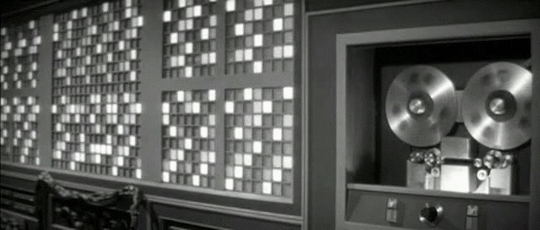
Excellent question, this is one of my favorite subjects! Blinkenlights serve a number of functions. Hollywood tended to use just the lights to make it look like a computer was busy doing something, but real computers had more than just lights on their front panel. Let's walk through a few examples of use cases with photos of computers I've seen over the years at museums and vintage computer festivals:
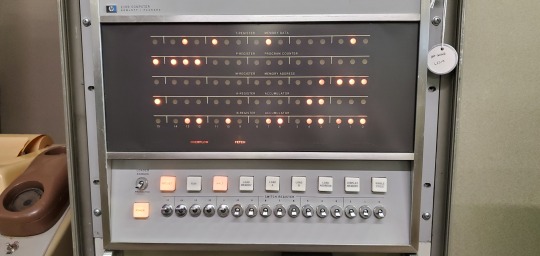

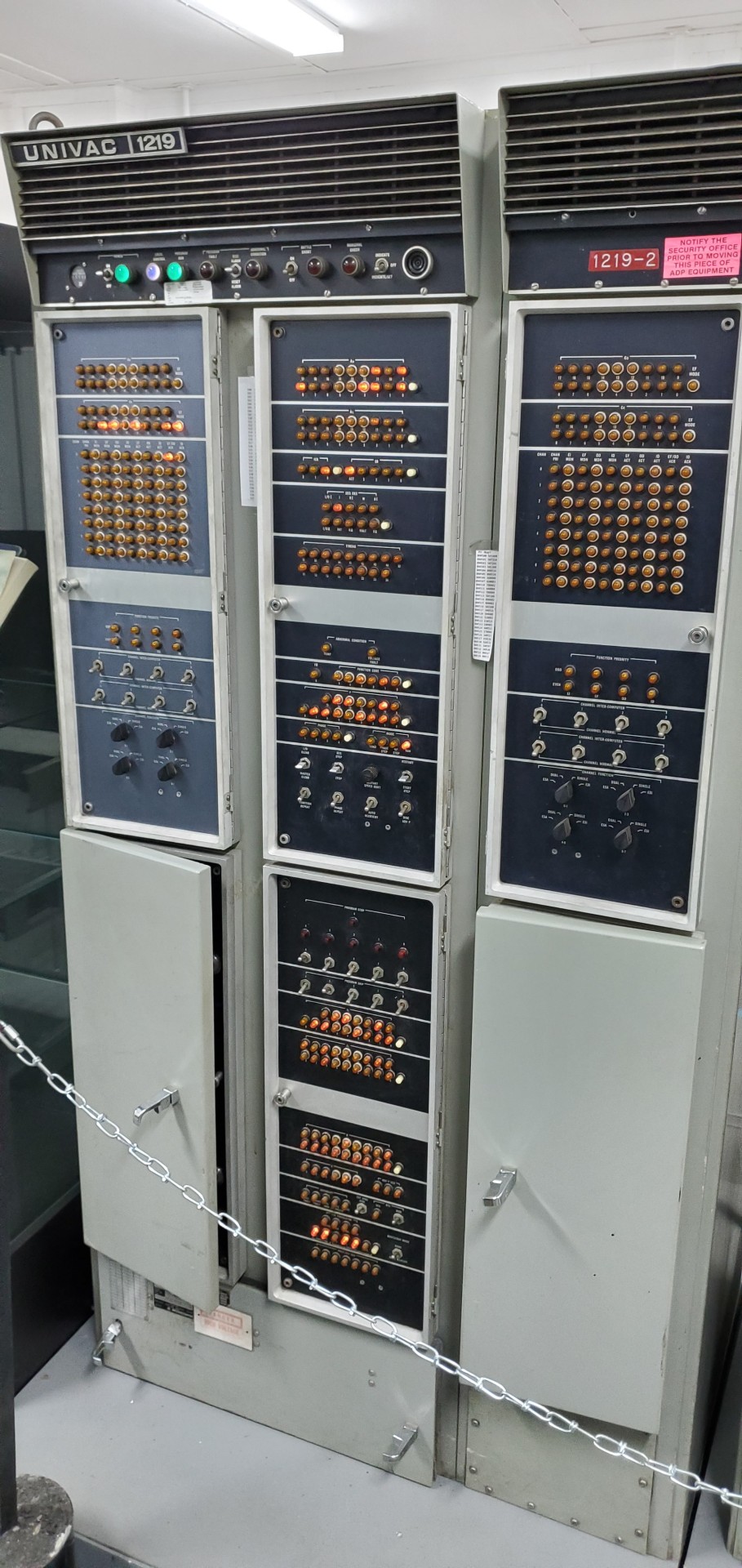
Some front panels were built to be used for diagnostics. Computers like these were primitive enough that they required constant care and debugging to do their jobs, especially the early vacuum tube machines (everything pictured here is transistorized). You could tell what peripherals were being used, but also check the status of registers, carry flags, status flags, data, various buses, etc. It was also a way to see if a program had "gone off into the weeds" and started doing things that were irregular, possibly due to a software bug, or a problem with the hardware.
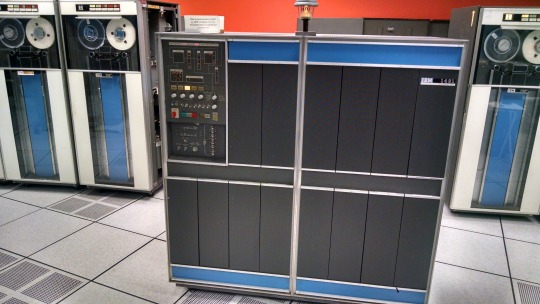
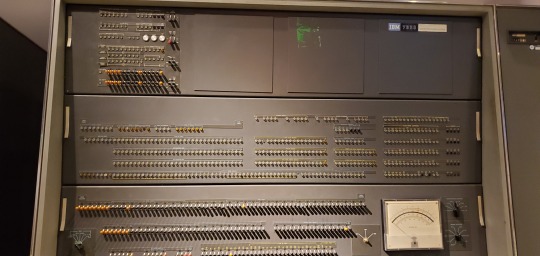
On many of these machines, you can enter programs directly into the main memory using the front panel, but it's an incredibly tedious process -- something to be avoided if possible. Consider it a last fallback.


Other times, it's a starting point, which we call "bootstrapping" (this eventually evolved into the term "booting"). You aren't likely to program everything on such a limited interface, but you are more likely to enter in a small program that can tell the computer how to run a more complex peripheral, like a paper tape or punch card reader, or maybe some type of magnetic storage device. Once you can get a program loading off of a larger permanent storage device, you can load up software to interface with a terminal of some kind which is much easier.

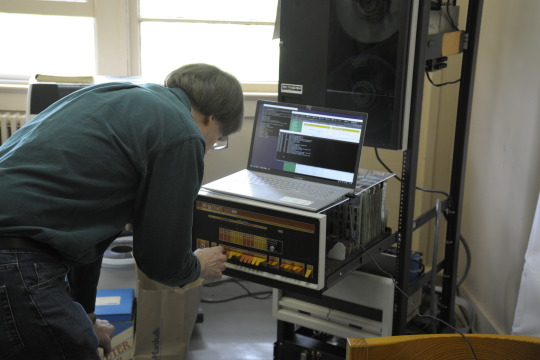
Eventually, the microprocessor made home computers a possibility, but many were only equipped with a front panel out of the box. You would have to add in a serial card, more RAM, possibly some ROMs, and either a teletype or glass terminal in order to get a more sophisticated and intuitive interface from the computer, capable of programming in a higher level language. Some were considered more like trainers, or hobbyist devices, and simply lacked that ability, meaning all you got was a front panel with switches and lights.

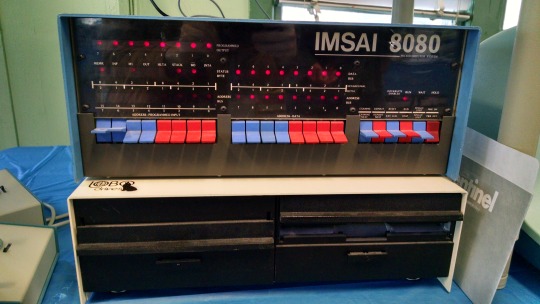
I made my own front panel to see what the experience was all about:

Then everything changed in 1977, with the introduction of these three machines: the TRS-80 Model I, the Commodore PET 2001, and the Apple II. They were what you might call "appliance computers" and they had no need for a front panel.
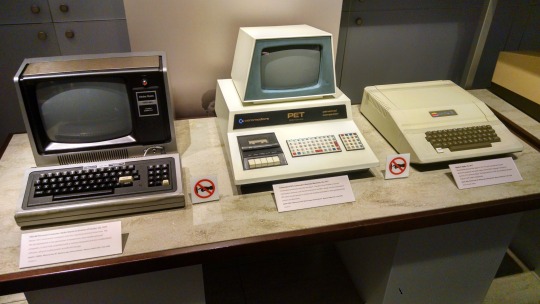
Hopefully that answered your question!
720 notes
·
View notes
Text
Slo-mo 486 activity 2 (Norton Speed Disk & simultaneous CD playback under DR-DOS)
7 notes
·
View notes
Text

56 notes
·
View notes
Text
We are working on a Thing; this is the first test of the software on the MK.II controller that works the way we want it.
What will it be doing? It's going to be used to 'light up' the front panel of a storage appliance as a display/art item.
Here's a picture of the MK.I as installed on the other front panel that started this whole thing:

(the front panel has a built-in LED light for the logo; two of the color changing LEDs are behind the "ID" and "alarm" lights on the upper right hand side of the panel.)
The whole thing should look pretty neat when it's done.
1 note
·
View note
Text

"pretty modem." she likes the blinking lights
1 note
·
View note
Text
Waiting for a robotgirl to reinstall her OS from magnetic tape, watching the blinkenlights in her chest panel - This too, is yuri
133 notes
·
View notes
Text

Slowly phasing sequencing.
Qpas through Rainmaker, PH3 (Ts-L) through Sinc Bucina then Erbe Verb. Both sequenced by Pachinko, sequenced by Pam's, Tetrapad, and Planar, with unclocked LFOs from Tetrapad modulating Planar. A clock division toggles bypass on Rainmaker's delay, creating feedback swells into the comb. This patch is the tense, unintended endpoint of a patch I started this morning, but it sums up the mood today.
On a meta note, blown away by how much the blinkenlights post took off. Going to keep fiddling with tags for engagement - I'd love for people to share and enjoy the visuals, but hopefully also the music.
#eurorack#modular synth#gif#flashing gif#technology#cybercore#tech aesthetic#aesthetic#cyber aesthetic#ambient#glitch#artists on tumblr#my art
28 notes
·
View notes
Text

A little bit of soldering later, and the new Cactus front panel is coming together nicely.
Did a few power-on smoke test, then installed the IC's.

After that, the only thing left to do was plug it into the Cactus SBC and see if it works.

Damn, that's 【 æsthetic】(く内ラ) as fuck.
After I figured out that my bench supply was causing brown-outs, I swapped it for a simple wall wart, and magically things started working right.

So far, I've identified a few faults that need fixing, but the bulk of things are working as intended. Hell yeah. Only took me 5 years to get around to it...
One feature that has never worked right on the hand-wired prototype now works: Memory Protect. It effectively prevents both the CPU and user from writing to RAM while the Protect light is illuminated, assuming that the RAM in question has the appropriate circuitry installed. It's a feature I stole from ...that was inspired by the OSI-300.
Anyway, I'm hype as fuck right now.
463 notes
·
View notes
Photo
ACHTUNG!!!
Das machine is nicht fur gefingerpoken und mittengrabben. Ist easy schnappen der springenwerk, blowenfusen und corkenpoppen mit spitzensparken. Ist nicht fur gewerken by das dummkopfen. Das rubbernecken sightseeren keepen hands in das pockets. Relaxen und vatch das blinkenlights!!!
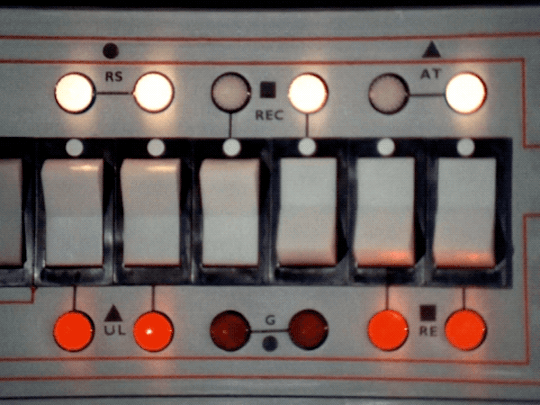

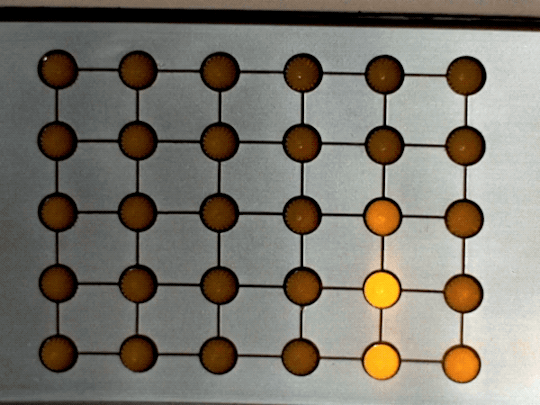
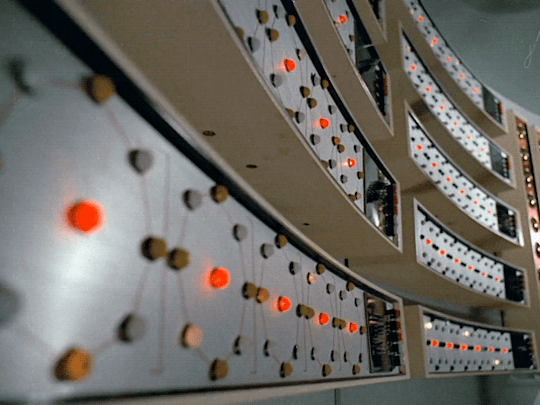
UFO (1970), “Ordeal”
6K notes
·
View notes
Text
Slo-mo 486 activity (Norton Speed Disk & simultaneous CD playback under DR-DOS)
6 notes
·
View notes
Text
I want to get a print of the OG Blinkenlights warning for Adam's desk, as an anniversary gift:

14 notes
·
View notes
Text
Success!
The Dividers module is two clock dividers in one module. The rotary switch at the top controls the one using of the bottom three jacks, based on the 4017 decimal counter, and yields an output gate for every n input gates it gets, where n can be 2-9; the LEDs around the arc show the count, and your output gate is high whenever the LED pointed to lights up.
The second — the line of LEDs and the other jacks, all the outlined stuff —is a binary divider, based on the 4024 ripple counter, that's always running; the jacks follow the corresponding LEDs, and divide by powers of two. (Again, I lost patience and built the thing while short four jacks; I'll pop them in when they arrive in the next week or two.)
There are a bunch of uses for clock dividers, including the fact that, since these can run at audio rates, they're also suboctave and subharmonics generators. But honestly, a big part of why I built this is because my Eurorack system has a big deficit of blinkenlights, and this goes a long way to solving that problem.
12 notes
·
View notes
Text
As a autistic as hell kid, i mainly took away the scene where Spock plays with the tape props at the computer room 😍😍😍
oh fuck i've got a 2 parter for star trek tonight. at least i think it's a two parter. whatever L'ammutinamento is i've got a 1ª and a 2ª parte of it
6 notes
·
View notes
